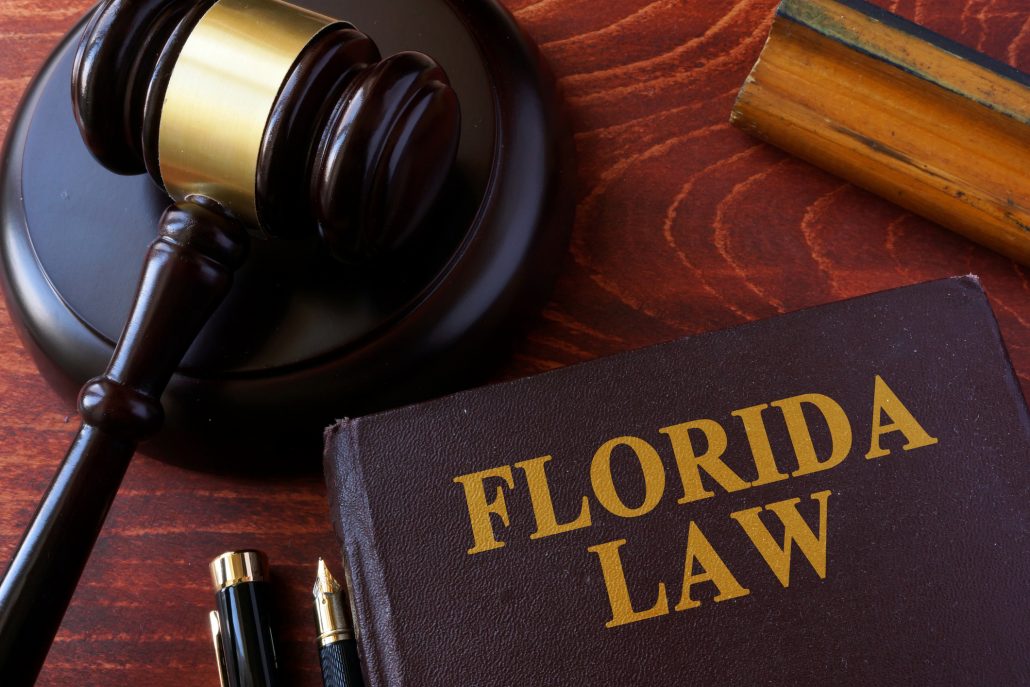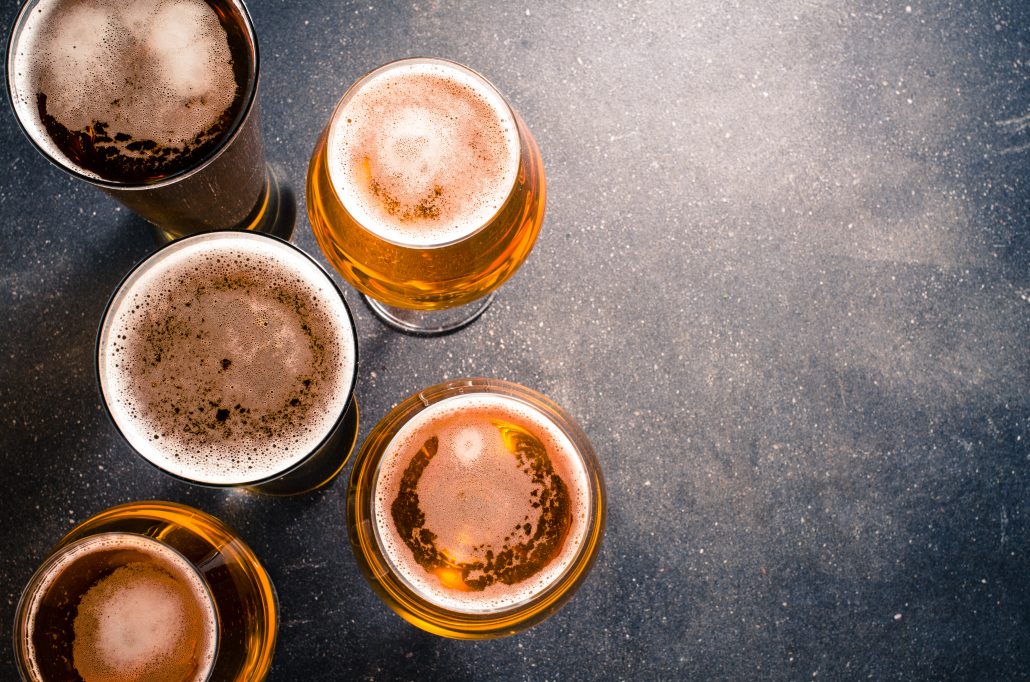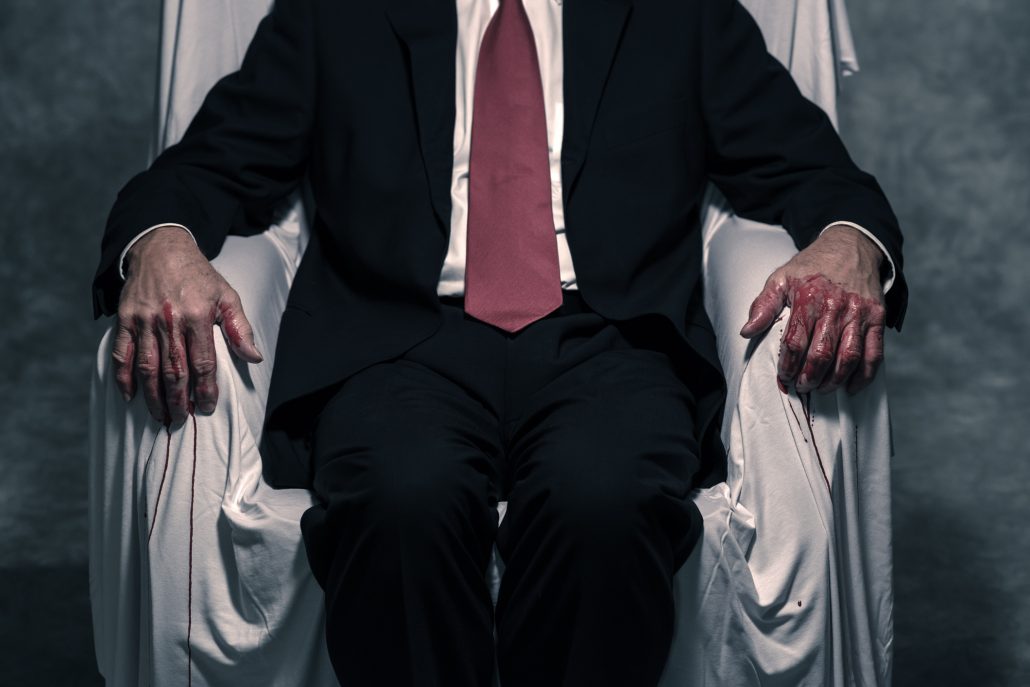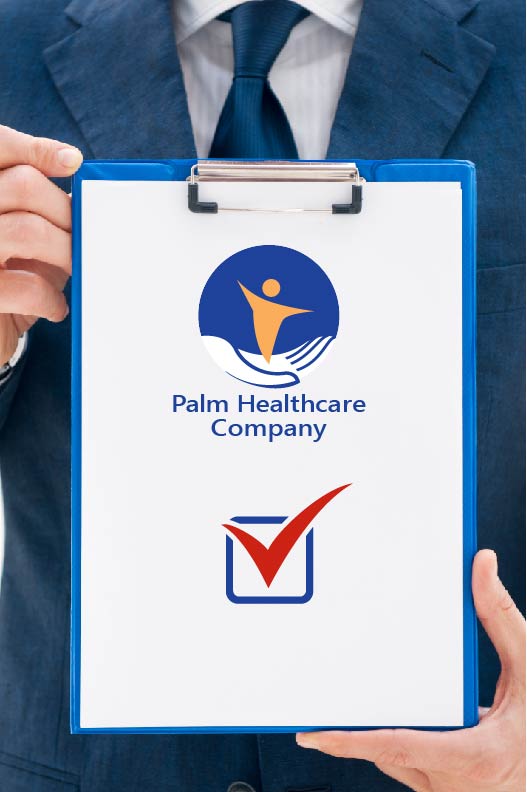by Justin Mckibben | Mar 19, 2019 | Addiction Treatment, Depression, Detox, Inpatient Treatment, Mental Health, News, Outpatient Treatment
Discrimination Through Denial of Coverage

Health insurance is probably going to be one of the great debates of this period in American history. There is already plenty of contention about how to properly provide coverage for those who need it. Some claim the changes made in the last decade have gone too far. Others argue it has not gone nearly far enough. Healthcare reform is a hot button issue in our world today. Needless to say, a big part of this conversation has to do with parity coverage for mental health. Now a new landmark court ruling is going to make a monumental difference for mental health and addiction treatment insurance coverage.
Simply put, the largest behavioral health care company in America has been denying coverage to some of its most vulnerable members to save money. And now, a federal court decision may put more of a spotlight on insurance companies.
Wit v. United Behavioral Health
The case was brought in front of a federal court in Northern California against United Behavioral Health (UBH). UBH is a company that manages behavioral health services for UnitedHealthcare and other health insurers. The court found that UBH denied claims of tens of thousands of people seeking mental health and substance use disorder treatment. The company was using defective medical review criteria in order to reject claims.
In Wit v. UBH, over 50,000 individuals were reportedly denied coverage based on the flawed review criteria. 11 plaintiffs sued UBH on the behalf of these victims. One victim, in particular, is Natasha Wit. Natasha had been seeking treatment for several chronic conditions, including:
Wit was repeatedly denied coverage for her treatment, despite the fact she did have healthcare benefits that should have offered coverage. Her family ended up paying out nearly $30,000 for treatment. And they are just one of the thousands of families to face the same discrimination.
Looking at the Marks Against UBH
According to recent reports, United Behavioral Health has been failing its members in more ways than one.
Federal courts determined that UBH developed internal guidelines that were “unreasonable and an abuse of discretion” and “infected” by financial incentives designed to restrict access to care for those who should qualify for coverage. Essentially, UBH was manipulating internal guidelines to avoid providing coverage that members had every right to under the law.
For many of those struggling with substance use disorder, defective criteria for coverage can equate to a death sentence. When looking over the requirements set by UBH, it is no wonder why the courts say they are illegitimate.
Firstly, their medical-necessity criteria fail to provide coverage to those chronic and comorbid conditions. Generally accepted standards of care state these conditions should be effectively treated, even when those conditions:
- Persist
- Respond slowly to treatment
- Require extended or intensive levels of care
However, UBH set guidelines that only approve coverage for what they labeled “acute” episodes or crises. For example, only individuals who were actively suicidal or suffering from severe withdrawal could be considered for coverage.
In other words, for someone who struggled with substance use disorder or mental illness, you had to be knocking on death’s door to get a chance at treatment. The court found that these guidelines were not acceptable.
Furthermore, UBH fails to use national evidence-based guidelines for covering different levels of care for mental health and substance abuse treatment, such as:
These are guidelines that have been developed by clinical specialty nonprofit organizations.
Additionally, UBH’s guidelines improperly required reducing the level of care, even if the providers who were treating them recommended maintaining a higher level of care. So patients would be removed from more intensive residential treatment programs and pushing into some form of outpatient therapy, even if the specialists argued that they were not ready.
This is a big deal. Most recovery advocates and healthcare providers agree that insurance companies should not be the ones telling treatment providers how to care for their patients.
-
State Mandated Guidelines
Furthermore, some states have mandated specific guidelines for evaluating the medical necessity for behavioral health services. UBH was also found to have violated these requirements for reviewing substance use disorder claims as well.
The case against United Behavioral Health was filed under the Employee Retirement Income Security Act of 1974 (ERISA). This is a federal mandate that governs group health insurance policies through private employers. More specifically, ERISA requires insurance plan administrators to function in a fiduciary capacity when overseeing employee benefit plans. This includes coverage for mental health and substance use disorder treatment.
In Wit v. UBH, the court determined that UBH was in breach of its fiduciary duties by developing and employing faulty medical necessity criteria for behavioral health services. Therefore, the court alleges that UBH is in violation of its obligations under this federal law.
What Does this Mean for Addiction Treatment Insurance Coverage?
This case is exposing insurers for refusing care to people at serious risk of death by overdose or suicide. It is important to remember that UBH is not the only insurance provider trying to find ways around federal and state coverage guidelines. Given the nature of these violations, advocates believe that regulators should immediately start examining the market conduct of all healthcare plans across the country.
Judge Joseph C. Spero in Wit v. UBH also points out that the company was circumventing the Mental Health Parity and Addiction Equity Act of 2008, also known as the Federal Parity Law.
Parity law actually requires insurers to cover illnesses of the brain, such as depression or addiction, the same as illnesses of the body, such as diabetes or cancer. In his ruling on Wit v. United Behavioral Health, Judge Spero highlights an abundance of evidence that guidelines created by the UBH were designed to diminish the impact of the 2008 Parity Act in order to keep benefit costs down. In other words, it is clear that the company was actively trying to work around federal law in order to avoid providing coverage to people with mental illnesses and addictions.
For those in the mental health and addiction communities, this brings new awareness to the discriminatory practices of treating mental health conditions differently than physical conditions. The new hope is that insurance providers will understand the consequences of discrimination against those who need help. With so much going on in healthcare, the Federal Parity Law must be protected.
Far too many people suffering from mental health and substance use disorders never get the help that they need. The last thing we need in a country devastated by an opioid crisis and rising overdose death rates is to create more roadblocks to treatment resources.
Palm Healthcare Company believes that if our country is ever going to overcome the damage of the opioid epidemic, we have to offer more comprehensive treatment options to those who still suffer. Insurance companies should not be keeping people from the care they deserve. Prevention is important, but we also believe in taking care of those who are already in the grips of substance use disorder by offering compassionate and effective care. If you or someone you love is struggling, please call toll-free now. We want to help.
CALL NOW 1-888-922-5398
by Justin Mckibben | Oct 1, 2018 | Alcohol, Alcohol Addiction, Alcoholics Anonymous, Alcoholism, Binge Drinking, Detox, Dual Diagnosis, Inpatient Treatment

(This content is being used for illustrative purposes only; any person depicted in the content is a model)
“Alcoholic” is the kind of term that a lot of people jokily use to describe their friend who has a few too many drinks one night, or something they say dismissively to make light of their own drinking binges. But does the average person truly understand what it means to be an alcoholic? Alcohol addiction might not seem as serious to some people, but alcoholism is truly devastating and far more complicated than you may think. Partly because people often assume that all alcoholics are the same.
So first, let us look at how alcoholism is commonly defined. Then, let us look at 4 different problem drinkers to see how alcoholics can be quite different.
Understanding Alcoholism
Alcohol use disorder (AUD) has been more commonly known for decades as alcoholism. Alcoholism is frequently used as a more broad term for any drinking of alcohol that results in physical and/or mental health problems. At one point, the Diagnostic and Statistical Manual of Mental Disorders (DSM) divided alcoholism into two types of disorders:
- Alcohol abuse
- Alcohol dependence
The most recent version is DMS-5, which integrates these two disorders into one definition of alcohol use disorder. That DSM-5 also identifies levels of mild, moderate and severe sub-classifications. According to the DSM-5, anyone meeting two of the 11 criteria for AUD in the same 12-month period would receive a diagnosis of AUD.
These 11 criteria include:
- Had times when you ended up drinking more, or longer, than you intended
- More than once unable to stop drinking when you wanted to or tried to stop
- Spent a lot of time drinking, being sick from drinking, or recovering from the aftereffects of drinking
- Wanting a drink so badly you cannot think of anything else
- Drinking or being sick from drinking often interferes with taking care of your home, family, job, school responsibilities
- Continuing to drink even though it causes trouble with family and friends
- Giving up or cutting back on interests and activities in order to drink
- Getting into situations that increase your chances of getting hurt while or after drinking
- Continuing to drink despite feeling depressed or anxious, adding to another health problem, or having memory blackouts
- Needing to drink much more for the same effect
- Experiencing alcohol withdrawal symptoms when the effects of alcohol wear off
Then the severity of the AUD is defined as:
Mild alcoholism is the presence of 2 to 3 of these symptoms.
Presence of 4 to 5 of these symptoms suggests moderate alcoholism.
The presence of 6 or more of these symptoms is an indication of severe alcohol use disorder.
5 Subtypes of Alcoholism
The National Institute on Alcohol Abuse and Alcoholism (NIAAA) is part of the National Institutes of Health (NIH). This organization has actually identified what it believes are 5 subtypes of alcoholism to help expand on our understanding of this complex disease. By looking at how alcoholism can manifest in different forms, a person can learn how to identify warning signs, and how to look for a personalized treatment program that fits their needs.
-
Young Adult
According to the NIAAA, the largest percentage of alcoholics actually falls into this category, with 31.5% of alcoholics in America. Nearly 1/3 of all alcoholics fit into this subtype.
This group is typically late teens and early 20s. Often these young adults are likely college students. The Centers for Disease Control and Prevention (CDC) reports:
- Underage drinkers between the ages of 12 and 20 regularly consume more alcohol at a time than older drinkers
- 90 percent of the alcohol consumed by this group is through binge drinking
Binge drinking is often perpetuated by underage and young adult drinkers. People who fall into the young adult alcoholic subtype rarely have alcoholism in their family history, and they may also be less likely to seek help for their excessive drinking as it is often considered “normal” as a “phase of life” that family members and adults may not take seriously.
-
Young Antisocial
This type of alcoholic is typically someone in their mid-20s who started drinking alcohol at an early age. With anyone, alcohol impacts brain chemistry, and regular exposure can actually change the way the brain’s circuitry works.
Young brains do not have a fully developed prefrontal cortex, meaning young people can have more difficulties controlling emotions and impulses. They are also more likely to take bigger risks. So excessive drinking may interfere with normal brain development, and increase the odds of substance abuse and addiction.
Unlike the young adult subtype, more than half of the young antisocial alcoholics have a family history of alcoholism.
Many people in this category suffer from a mental health disorder. Around half of the young antisocial subtype also struggle with an antisocial personality disorder. If someone is struggling with a co-occurring mental health disorder, the risk of developing alcoholism or a substance use disorder (SUD) is elevated. Other co-occurring disorders frequently found in this category include:
Around 3/4 of this subtype will also use tobacco and/or marijuana. They may also struggle with opioids or cocaine addictions.
-
Functional
Around 19.5% of the alcoholic population in the country will fall into the category of the functional alcoholic. These are typically middle-aged, well-educated, and seemingly well put together individuals. They may have a seemingly stable home life with a loving family. Functional alcoholics probably have a steady job and appear to have their lives together. They do not fit into the common stereotype of alcoholism.
Around 1/4 of this subtype of alcoholics have at least one major depressive episode in their lives. However, functional alcoholics are also often good at hiding emotional distress and issues with drinking.
Usually, a functional alcoholic will consistently fulfill most of their regular obligations. In fact, their family may even enable their drinking by making excuses for them when issues related to alcohol abuse do come up. The fact that they are able to appear successful will make it much harder to convince them that they have a drinking problem. Thus, many functional alcoholics will not seek help.
-
Intermediate familial
This subtype is also typically made up of middle-aged alcoholics. Around half of these individuals come from families with multigenerational alcoholism. Close to 1 out of every 5 intermediate familial alcoholics also struggles with marijuana and cocaine abuse. Many of these individuals also have co-occurring mental health disorders.
- Nearly half of all intermediate familial alcoholics have struggled with clinical depression
- 20% have battled bipolar disorder
- Many others struggle with obsessive-compulsive disorder and generalized anxiety disorder
A lot of intermediate familial alcoholics may use alcohol as a way to self-medicate the difficult emotional symptoms of their mental health disorders.
-
Chronic severe
When people use the term alcoholic, this is the subtype they most commonly associate with it. Surprisingly though, chronic severe alcoholics only make up 9% of the entire alcoholic population of America.
So really, that stereotype of alcoholism actually represents the minority of alcoholic drinkers.
Chronic severe alcoholics are comprised mostly of middle-aged individuals who had early onset of problem drinking. This subtype experiences high rates of Antisocial Personality Disorder and criminality. Furthermore, nearly 80% of the chronic severe alcoholics come from families with multigenerational alcoholism. This group has the highest rates of other psychiatric disorders, including:
- Depression
- Bipolar disorder
- Anxiety disorders
Chronic severe types also experience high rates of dependence with:
- Tobacco
- Marijuana
- Cocaine
- Opioids
This is alcoholism to an extreme. Thankfully, this is the subtype with the highest rates of admission to alcohol addiction treatment.
Why Alcohol Addiction Treatment Matters
According to the NIAAA, in 2015 over 6% of American Adults met the criteria for AUD. Sadly, less than 10% of those people struggling with alcoholism received professional treatment. Those numbers alone show how much having alcohol addiction treatment matters. Each subtype will have unique experiences, which means they can greatly benefit from a recovery plan that is custom made for their unique needs. A functional alcoholic may want a treatment plan that incorporates their family. A chronic severe alcoholic may be suffering from a serious health condition that requires more of a focus on medical care.
The truth is, for how devastating alcoholism can be, it is troubling that so few people actually get the help they desperately need. Alcohol withdrawal symptoms are not just uncomfortable, but they can be dangerous and even life-threatening depending on the severity. That is why safe medical detox for alcohol is such a key component of a treatment program.
With all of those subtypes who experience co-occurring mental health disorders, it is critical that they have access to dual diagnosis treatment opportunities. For these individuals, it is important that treatment is not exclusively focused on alcoholism, but also addresses their mental health. Dual diagnosis treatment is designed to simultaneously treat co-occurring conditions while also providing comprehensive care and support for recovering from alcohol addiction. For those with co-occurring disorders, only treating one while ignoring the other can be counterproductive. An untreated mental health disorder can ultimately lead an individual to self-medicate. Dual diagnosis treatment isn’t just a better level of care- it is a crucial aspect of relapse prevention.
Regardless of what subtype someone may fit into, it is important that anyone who fits the criteria for alcohol use disorder seek professional addiction treatment. If you or someone you love is struggling, please call toll-free now. We want to help.
CALL NOW 1-888-922-5398
by Justin Mckibben | Apr 26, 2018 | Addiction Treatment, Detox, Harm Reduction, Heroin, Inpatient Treatment, Needle Exchange Programs, News, Opioids, Outpatient Treatment, Professionals, Recovery, Safe Injection Sites, Sober Home

8 months ago, Florida was home to 953 licensed drug treatment centers, and 207 were in Palm Beach County. As of April 1, there are now 185 in Palm Beach, with 771 in the whole state. This decrease is due to the crackdown on fraud by Palm Beach State Attorney’s Office, which has led to 45 arrests in the last year and a half. So far, those arrests have led to 16 convictions. For State Attorney Dave Aronberg there is no sign of slowing down.
Recently, Dave Aronberg spoke with Opioid Watch to talk about the work his office has been doing to try and strengthen the addiction treatment industry. Chief Assistant State Attorney Alan Johnson also sat down to talk about how Palm Beach County is fighting to protect those who are coming to Florida for help. Johnson heads the office’s Sober Homes Task Force.
Dave Aronberg VS Purdue Pharma
According to Aronberg, he got involved with opioid-related issues back in 2001, when he was an assistant attorney general. Aronberg says he was asked by his boss, Bob Butterworth, to investigate Purdue Pharma. This Big Pharma giant is the producer of OxyContin. This powerful prescription opioid has been credited with making a heavy contribution to the opioid crisis. Dave Aronberg was to examine the marketing practices of Purdue Pharma, and is quoted in the interview transcript stating:
“I believe we were one of the first in the country.”
Of course, now Purdue Pharma is one of many big name pharmaceutical companies being accused in lawsuits across America. In fact, Delray Beach, Florida recently filed its own case against the company.
When asked about what he found, Aronberg said that Purdue was marketing the product like it was Advil. Purdue has been repeatedly accused of pushing this product as if it was far less dangerous than it actually was. In 2002, Dave Aronberg was elected to state senate, and shortly afterward the case against Purdue was settled. In the edited interview transcript, Aronberg is quoted:
“Purdue also offered $2 million to the state to establish its first prescription drug monitoring program. I worked in the state senate to get the PDMP enacted into law. But some conservatives refused to go along. They thought it was Big Government. So Purdue’s $2 million went away, because the offer expired. We didn’t get the PDMP till 2011. By then the carnage was horrific.”
Furthermore, Opioid Watch notes that a Purdue spokesperson confirmed that the state failed to implement a PDMP by July 1, 2004, which was the expiration of the companies offer.
Dave Aronberg Goes to Congress
In December of 2017, Aronberg went in front of Congress to testify concerning fraud and abuse in the addiction treatment industry. In this meeting, they discussed various issues with shady facility operators in Florida and made suggestions on how the law could step in to change it and protect patients. The interview transcript quotes Aronberg:
“In recent years, we’ve had an influx of unscrupulous operators who enrich themselves by exploiting those in recovery. As a consequence, we’re attracting thousands of young people from throughout the country into fraudulent rehab centers. (We’re talking about some, not all. There are good rehab centers, too.)”
Again, Aronberg found himself at battle with shady marketing practices. While investigating the treatment industry, Aronberg’s office discovered illegal operations that not only manipulated insurance providers but put patients at extreme risk.
From patient brokering, where illicit actors would sell patients with insurance to the highest bidders, to illegal kickback schemes being run by sober homes to outpatient treatment programs. Chief Assistant State Attorney Alan Johnson added information about the exploitation of urine analysis costs, and even some programs that began billing insurers for allergy and DNA testing. Aronberg states:
“We have a doctor who billed $7 million in nine months for allergy tests.”
Needless to say, the task force and state officials had their work cut out for them.
The ACA, ADA, and FHA
When talking about the many scams being run by various illegitimate businesses, the conversation came back to insurance and how these cons run. Here Dave Aronberg talks about his beliefs on how the law should step in and help restructure the current system.
“Number one: Change the Affordable Care Act’s fee reimbursement model to an outcome-based reimbursement model. Where the good providers are rewarded and the bad ones are paid less. Right now, the opposite occurs, so the more times you fail, the more money you get. There’s an incentive for more services and for more relapse. That shouldn’t be.”
After talking about the issues with the ACA, he talked about the ADA and FHA.
“The second change we need is this: the Americans with Disabilities Act and Federal Housing Act have been misused and exploited by bad actors who own flophouses.”
He went on to say,
“Local governments are largely prohibited from overseeing the sober home industry. If they want to require mandatory inspections, certifications, and registrations, they’re likely prohibited under federal law.”
In essence, Aronberg believes the law should allow local governments to create their own guidelines for health, safety and the general welfare of the patients. None of these demands seems outlandish, and with reasonable regulation, the reputable and effective providers in this industry can continue to best serve the South Florida recovery community.
Aronberg also points out that the problem is not only in Florida. Recently, he went to Orange County, California to meet with officials dealing with the same situation. Next for Dave Aronberg is leading the national task force of 34 prosecutors in 30 states. Their goal is to produce a working paper for setting best practices for prosecutors all over America concerning these issues. The task force also intends to make suggestions for changes to federal and state laws.
What might be most surprising though is the mention of harm reduction strategies?
“It’s about prevention, drug treatment, and innovative strategies. I think it will be powerful because it’s going to be prosecutors talking about needle exchanges and disposal and safe injection sites. People assume prosecutors are going to be focusing only on mandatory minimums and longer sentences. That’s not what this is about. I think it’s going to surprise people.”
While needle exchanges and safe injection sites have been proposed in numerous states, it is not the most popular idea. San Francisco is actually on track to open the first safe injection site in America, with Philadelphia not far behind, and Seattle and Baltimore in the conversation as well.
With Aronberg and the task force working to make a difference, hopefully, we will see the right change soon. We hope it will make the recovery community stronger as a whole. Reputable and respected providers are also doing their part to refine their practices while implementing innovative and effective resources to ensure that those who with drug or alcohol addiction always have a safe place in Palm Beach County to get the help they need. With the opioid crisis ongoing, having real resources for opioid treatment is still an essential part of overcoming the problem.
Palm Healthcare Company is a leader in holistic addiction treatment with over 20 years of helping people from all over the country heal mind, body and spirit. Providing safe and comprehensive care should always be a focus in the effort to overcome the drug problem, and preservation of life should always be a priority. If you or someone you love is struggling, please call toll-free now.
CALL NOW 1-888-922-5398
by Justin Mckibben | Mar 13, 2018 | Alcohol, Alcohol Addiction, Alcoholism, Binge Drinking, Death, Inpatient Treatment

Even though the country is very aware of the opioid crisis that continues to claim lives every day, one of the most dangerous drugs in America is still alcohol. Heavy drinking in the US is also a deadly epidemic. According to the Center for Disease Control and Prevention (CDC) an estimated 90,000 people die from excessive drinking every year.
Another new report also indicated that those who do die from alcohol abuse actually die an average of 30 years prematurely.
With more deaths related to heavy drinking than any other drug, which states have the highest rates? A new piece released on 24/7 Wall St. from last week went to work ranking all 50 states.
Defining Different Drinking
In order to better understand how troubling the data truly is, we first have to understand what qualifies as “excessive drinking”.
The CDC categorizes an alcoholic drink as something containing 0.6 fluid ounces of pure alcohol. Therefore, the CDC considers excessive drinking to include terms like:
For women, excessive drinking is four or more drinks on a single occasion. For men, it requires five or more drinks in one sitting.
When it comes to “heavy drinking”, by CDC standards:
- Women consume at least eight alcoholic drinks per week
- Men consume at least 15 alcoholic drinks per week
24/7 Wall St. analyzed CDC data on heavy drinking, along with census bureaus and the National Institute on Alcohol Abuse and Alcoholism (NIAAA) to create their report. What it shows is that 18% of Americans drink excessively, but that the difference between states it dramatic.
America’s Heavy Drinking States
-
Tennessee
- Adults drinking excessively: 11.2%
- Alcohol-related driving deaths: 28.0% (11th lowest)
-
West Virginia
- Adults drinking excessively: 11.4%
- Alcohol-related driving deaths: 32.0% (25th lowest)
-
Utah
- Adults drinking excessively: 12.4%
- Alcohol-related driving deaths: 19.7% (the lowest)
-
Alabama
- Adults drinking excessively: 13.0%
- Alcohol-related driving deaths: 29.4% (17th lowest)
-
Mississippi
- Adults drinking excessively: 13.3%
- Alcohol-related driving deaths: 23.3% (3rd lowest)
-
New Mexico
- Adults drinking excessively: 13.8%
- Alcohol-related driving deaths: 32.1% (25th highest)
-
Oklahoma
- Adults drinking excessively: 13.9%
- Alcohol-related driving deaths: 29.9% (19th lowest)
-
North Carolina
- Adults drinking excessively: 14.9%
- Alcohol-related driving deaths: 32.3% (24th highest)
-
Arkansas
- Adults drinking excessively: 15.3%
- Alcohol-related driving deaths: 28.4% (13th lowest)
-
Idaho
- Adults drinking excessively: 15.4%
- Alcohol-related driving deaths: 28.4% (23rd highest)
-
Maryland
- Adults drinking excessively: 15.5%
- Alcohol-related driving deaths: 32.8% (20th highest)
-
Nevada
- Adults drinking excessively: 15.8%
- Alcohol-related driving deaths: 32.8% (21st highest)
-
Arizona
- Adults drinking excessively: 16.0%
- Alcohol-related driving deaths: 27.6% (9th lowest)
-
Kentucky
- Adults drinking excessively: 16.3%
- Alcohol-related driving deaths: 28.5% (14th lowest)
-
South Carolina
- Adults drinking excessively: 16.4%
- Alcohol-related driving deaths: 37.8% (7th highest)
-
Delaware
- Adults drinking excessively: 16.6%
- Alcohol-related driving deaths: 37.9% (6th highest)
-
Indiana
- Adults drinking excessively: 16.8%
- Alcohol-related driving deaths: 23.6% (5th lowest)
-
Georgia
- Adults drinking excessively: 16.8%
- Alcohol-related driving deaths: 23.4% (4th lowest)
-
Kansas
- Adults drinking excessively: 16.9%
- Alcohol-related driving deaths: 27.3% (8th lowest)
-
Texas
- Adults drinking excessively: 17.3%
- Alcohol-related driving deaths: 29.9% (8th lowest)
-
Virginia
- Adults drinking excessively: 17.4%
- Alcohol-related driving deaths: 30.5% (20th lowest)
-
Florida
- Adults drinking excessively: 17.4%
- Alcohol-related driving deaths: 28.2% (12th lowest)
-
Wyoming
- Adults drinking excessively: 15.5%
- Alcohol-related driving deaths: 35.3% (10th highest)
-
New Jersey
- Adults drinking excessively: 17.6%
- Alcohol-related driving deaths: 24.3% (20th lowest)
-
Missouri
- Adults drinking excessively: 17.7%
- Alcohol-related driving deaths: 31.7% (23rd lowest)
-
South Dakota
- Adults drinking excessively: 17.7%
- Alcohol-related driving deaths: 35.2% (11th highest)
-
Washington
- Adults drinking excessively: 17.8%
- Alcohol-related driving deaths: 35.0% (12th highest)
-
Rhode Island
- Adults drinking excessively: 17.9%
- Alcohol-related driving deaths: 40.4% (3rd highest)
-
California
- Adults drinking excessively: 18.0%
- Alcohol-related driving deaths: 29.0% (15th lowest)
-
Pennsylvania
- Adults drinking excessively: 18.1%
- Alcohol-related driving deaths: 32.0% (24th lowest)
-
New York
- Adults drinking excessively: 18.2%
- Alcohol-related driving deaths: 23.0% (2nd lowest)
-
New Hampshire
- Adults drinking excessively: 18.4%
- Alcohol-related driving deaths: 31.2% (22nd lowest)
-
Connecticut
- Adults drinking excessively: 18.6%
- Alcohol-related driving deaths: 33.4% (18th highest)
-
Louisiana
- Adults drinking excessively: 18.8%
- Alcohol-related driving deaths: 32.6% (22th highest)
-
Oregon
- Adults drinking excessively: 18.8%
- Alcohol-related driving deaths: 32.8% (19th highest)
-
Colorado
- Adults drinking excessively: 19.1%
- Alcohol-related driving deaths: 34.7% (13th highest)
-
Ohio
- Adults drinking excessively: 19.2%
- Alcohol-related driving deaths: 34.3% (14th highest)
-
Massachusetts
- Adults drinking excessively: 19.5%
- Alcohol-related driving deaths: 27.8% (10th lowest)
-
Vermont
- Adults drinking excessively: 19.6%
- Alcohol-related driving deaths: 33.4% (17th highest)
-
Maine
- Adults drinking excessively: 19.6%
- Alcohol-related driving deaths: 39.8% (4th highest)
-
Michigan
- Adults drinking excessively: 20.0%
- Alcohol-related driving deaths: 29.4% (16th lowest)
-
Nebraska
- Adults drinking excessively: 20.4%
- Alcohol-related driving deaths: 35.6% (9th highest)
-
Hawaii
- Adults drinking excessively: 20.5%
- Alcohol-related driving deaths: 38.0% (5th highest)
-
Iowa
- Adults drinking excessively: 21.0%
- Alcohol-related driving deaths: 25.4% (7th highest)
-
Minnesota
- Adults drinking excessively: 21.1%
- Alcohol-related driving deaths: 30.9% (21st lowest)
-
Illinois
- Adults drinking excessively: 21.2%
- Alcohol-related driving deaths: 34.2% (15th highest)
-
Montana
- Adults drinking excessively: 21.8%
- Alcohol-related driving deaths: 46.3% (2nd highest)
-
Alaska
- Adults drinking excessively: 22.1%
- Alcohol-related driving deaths: 33.8% (16th highest)
-
Wisconsin
- Adults drinking excessively: 24.5%
- Alcohol-related driving deaths: 36.9% (8th highest)
-
North Dakota
- Adults drinking excessively: 24.7%
- Alcohol-related driving deaths: 46.7% (the highest)
What State Stats Tell Us
Looking at some of the data, you might be surprised at where some of these states ended up in the rankings. One thing that comes to no surprise is that the state with the highest rate of excessive drinking- North Dakota- also has the highest rates of alcohol-related driving deaths.
But there are things that you might not be able to tell from these numbers at face value. For one, the director of the NIAAA George Koob claims,
“There is a clear correlation between a state’s excessive drinking rate and income.”
For example, the top 25 states with higher drinking rates also have similarly high median household income. Out of those 25, 14 of them have incomes that exceed the national average of $57,617. Compare that to the 10 states with the lowest drinking rates, with 9 of them having household incomes well below that same average.
However, Koob cautions us not to see this correlation too cut and dry, stating:
“If you look at individuals, the [drinking-to-household income] pattern is somewhat different.”
Someone may look at the report and suggest that affluent individuals frequently drink to excess, however, they don’t appear to drink as heavily. In fact, it seems low-income individuals drink to excess less frequently, but when they drink, they drink heavily more consistently.
Overall, we should take notice of just how prevalent excessive drinking is in different areas all over the country. In 2016 the population of North Dakota (#1 on the list) was around 757,952. Based on this number, 24.7% excessive drinking comes out to around 187,214 adults. Even with Tennessee, the state with the lowest rate, the numbers are pretty serious. With a 2016 population of 6.651 million, 11.2% comes out to 744,912 adults drinking excessively. So almost the entire population of North Dakota.
We have to be able to acknowledge risk behavior like excessive and heavy drinking in order to help those who may be struggling with alcohol use disorder. With alcohol doing real damage to so many lives in every corner of America, providing treatment programs for those struggling with alcohol use disorder is incredibly important. If you or someone you love is struggling with alcohol abuse or addiction, please call toll-free now. You are not alone.
CALL NOW 1-888-922-5398
by Justin Mckibben | Jan 3, 2018 | Addiction, Addiction Treatment, Donald Trump, Drug Abuse, Drug Policy, Dual Diagnosis, Family, Fentanyl, Inpatient Treatment, Law Enforcement, Mental Health, News, PAARI, Prescription Drugs, Professionals, Recovery, Sobriety, Stigma, Synthetic Drugs

With the beginning of the new year, Palm Healthcare Company is looking forward to helping spread more exciting stories of experience, strength, and hope while also sharing important news stories and exciting new developments that relate to the world of addiction recovery and substance use disorder treatment. As we commit ourselves to another year of fighting alongside thousands of people working toward a better future, we would also like to take some time looking back on all the big moments in 2017 that we shared with our Palm Healthcare Company Blog.
-
President Trump Declares Public Health Emergency: What’s the Plan?

October of 2017, President Donald Trump made an announcement declaring the opioid crisis in America as a Public Health Emergency. This highly anticipated declaration was delivered in a way slightly different than many had expected, noting the technical differences between a Public Health Emergency and a National Emergency.
Many advocates were concerned that this announcement did not provide a concrete foundation for the necessary federal funding and did not initiate much-needed action, but others we assured that this means the Trump administration was taking this issue very seriously. In this article, we took a look at what this announcement did actually accomplish, and what it failed to deliver on.
-
Racketeering for Fentanyl: Opioid Maker Insys Founder Arrested for Bribes

A huge development to another story came in late 2017 when John Kapoor, former CEO of Insys Therapeutics and founding father of one of the most prominent opioid manufacturers in the country, was arrested and charged with conspiring to push the signature drug of Insys Therapeutics, a Fentanyl spray called Subsys, for unacceptable uses through bribes and kickbacks.
The Palm Healthcare Company blog notes how back in 2016 the Justice Department reported to be charging 6 former executives and sales-managers of Insys Therapeutics for conspiring to defraud health insurers.
When looking at the details in this story, it has intensified the conversation about Big Pharma involvement in the epidemic
-
Can Kellyanne Conway Really Compete with the Opioid Crisis?

Not too long after President Trump’s declaration of a Public Health Emergency pertaining to the opioid crisis, Kellyanne Conway was announced as leading the charge on the White House’s efforts for addressing the opioid epidemic.
This Palm Healthcare Company blog saw a lot of comments!
While some find that having a high-profile figure at the head of the efforts gives validity to the White House’s commitment to solving the opioid issue in America, many others are speaking out in frustration. Those in opposition to this appointment say that while she may be useful as a counselor or pollster, she has no experience of expertise when it comes to drug abuse, addiction or substance use disorder treatment.
Thus far the one thing both Kellyanne and the President seem adamant about is a media campaign, but advocates are still afraid this is more “Just Say No” and not enough support for effective resources.
-
After Las Vegas Shooting: PTSD and Mental Health Must be Priority

In early October of 2016, the nation was shaken to its core when Las Vegas had one of the deadliest shootings in modern American history. This horrific tragedy flooded newsrooms and live viral footage with the country watching in shock as a gunman killed 58 people and injured 546 more at an outdoor music festival.
In the aftermath of this terrible and heartbreaking incident, our Palm Healthcare Company blog took a look at how such traumatic experiences impact people, and about the importance of those who struggle with Post-traumatic Stress Disorder (PTSD) getting proper diagnosis and care.
At a time when so many people are self-medicating with dangerous or even deadly narcotics, it is important to care for those most vulnerable, especially after such an earth-shattering experience.
-
Police Helping Addicts into Treatment is a Growing Trend Saving Lives

In August of 2017, we took a look back at several programs that had come to light all over the country based on Police Departments working with their communities to offer drug users the chance to get help with addiction treatment instead of being arrested and charged.
The pioneering program came from Gloucester Police Department in Massachusetts back in 2015. This program allowed users to ask police for help, and told addicts they could submit drugs to local law enforcement without fear of being arrested if they were willing to seek treatment. A 2016 study showed that this program was experiencing some impressive success.
Police departments in a number of other states were inspired by this and took up similar programs as a way to help their communities fight the addiction outbreak.
The Palm Healthcare Company blog took a close look at a handful of these programs to celebrate their compassion and success.
-
Sterilized for Cash: This Woman Pays Drug Addicts to Not Have Kids

Pregnant lady’s stomach and her hand holding dollar over black background
When we posted this Palm Healthcare Company blog we saw a great deal of debate in the comments on our Facebook. For over 20 years, Barbara Harris has driven across the country using cash to ask addicted women to give up their fertility. To date, the organization has paid over 7,000 people.
The controversy around such a powerful story had some people showing a great deal of support for someone giving addicted women an incentive to not get pregnant, while other people were appalled and angered that someone would entice desperate women who are not in the right mindset to make such dramatic and life-altering decisions with their bodies.
-
What Chester Bennington Taught Us about Addiction and Depression

(This content is being used for illustrative purposes only; any person depicted in the content is a model)
In July of 2017, the world lost a great artist and inspirational musician with the death of Chester Bennington, the lead singer of the band Linkin Park.
Initial reports were that Bennington had died from suicide by hanging, with later reports indicating that Chester had been drinking at the time of his death. The vocalist had been open about his struggles with depression and drug addiction over the years, and in this article, we took a look at just how much Chester Bennington could teach us about the devastation of depression and addiction.
-
Dear Media, Thank You for Bad Press

South Florida has been under a great deal of scrutiny recently, specifically concerning the issues facing the recovery community such as unethical and illegitimate sober home operators in the area. In June, there was a Megyn Kelly NBC News Investigation which focused in on Delray Beach, Florida and some of the big problems concerning unscrupulous activities from corrupt individuals exploiting drug addicts in need of help.
We took this time to look over some of the bigger stories concerning the illicit activities in South Florida with the recovery industry while showing support and gratitude for all those working together to try and put an end to operators who are taking advantage of people in need of help.
-
Palm Healthcare Measures Up to Addiction Treatment Outline for EAP

In September of 2017, we took a very close look at an article written by the Journal of Employee Assistance that was designed to help Employee Assistance Programs (EAPs) find the right kind of addiction treatment programs to recommend to their clients.
The outline given for EAPs to find effective and reliable addiction treatment options gives a list of things to look for. The Palm Healthcare Company blog was happy to show off just how all of our facilities measure up to these crucial standards.
Keep an Eye Out for More
Palm Healthcare Company continues to try and share every treatment development, news story or exciting innovation on our blog to not only help more people learn and raise awareness but to offer some perspective and maybe ask some new questions.
Whether it is sports, celebrities, news or politics we are committed to talking about important stories that pertain to drug policy in America, substance use disorder, mental health, and personal wellness. We will continue to touch on the top stories of 2018 to spread the word and hopefully inspire more people to get involved in these crucial conversations.
2017 was an intense, innovative and inspiring year. Here is to hope for 2018.
Holistic addiction treatment means incorporating every aspect of life for each individual with personalized opportunities for lasting recovery. So every bit of information can help anyone make a more comprehensive decision about what kind of recovery plan they want. If you or someone you love is struggling, please call toll-free now.
CALL NOW 1-888-922-5398
by Justin Mckibben | Oct 24, 2017 | Addiction Stigma, Addiction Treatment, Drug Policy, Inpatient Treatment, Mental Health, News, Prescription Drugs

If that headline seems kind of confusing, don’t worry, it should. Technically insurance companies are already required by law to provide the same coverage for substance abuse and mental health that they do for other health conditions… and therein lies the issue.
Back in August the White House Opioid Commission, established by President Trump and led by New Jersey Governor Chris Christie, made several recommendations to the current administration about how to address the current drug crisis as it damages communities across the country. One of those recommendations was to declare a national emergency, while others had to do with options for prevention and education.
In the aftermath of ex-DEA agent Joe Rannazzisi’s eye-opening interview exposing the shady connections between Congress and Big Pharma companies, many have been looking closely at how government officials and multi-billion dollar empires helped create the opioid epidemic. Now the White House’s Opioid Commission is putting a focus on how health insurance companies and the flaws in their policies have contributed to the intensifying addiction crisis.
So with the opioid commission saying they will call-out insurers and make demands on coverage for addiction treatment, will more people have access to help?
Restricted Addiction Treatment
One of the biggest issues the opioid commission seems to have with insurance companies is that frequently their policies only cover one type of addiction treatment and not others. It seems insurance companies are convinced that with a complex and extremely personal issue like substance use disorder or mental health conditions, there is a one-size-fits-all answer. Sadly, most advocates can tell you this isn’t the case.
Something else especially frustrating is that laws already exist to prevent insurers from treating addiction treatment different than any other health issue. Chris Christie himself said,
“Why are we still not seeing addiction services covered, and mental health services covered as broadly as every other type of disease?”
“And what do we need to do to make sure that the law is enforced and followed?”
The Mental Health Parity and Addiction Equity Act of 2008 requires health insurers to treat mental health and substance abuse disorders the same as any other disease. It means they should provide health care coverage for these conditions without additional limits, co-pays or deductibles. If companies add on additional requirements, it creates even more barriers between the suffering individual and treatment. Sadly, not every insurance company thinks it has to play by the rules.
A task force convened by President Barack Obama last year reported that numerous insurance companies still place a number of limits on addiction coverage, like more strict pre-authorization requirements. The insurance companies claim that their policies are only part of a complex problem, insisting that the issue also has to do with shortages of doctors and poor medical training from healthcare providers in the field of addiction treatment.
However, the simple fact that insurance companies are still trying to push back against supporting addiction treatment has the opioid commission ready to address the inconsistencies that are making it even harder for people who need help to get the help they deserve.
Holding Insurance Companies Accountable
The opioid commission is not holding back when it comes to trying to make insurance companies contribute to solutions since they helped contribute to the problem. The New Jersey Governor warned health insurance companies to be prepared for a final report that will “place new demands” on health insurance policies.
Christie and the opioid commission seem to be playing offense, saying Big Pharma drug companies and health insurers profit while allowing an epidemic of addiction to continue, but these new demands will hopefully change all that. Christie added,
“I’m a capitalist. I want everybody to make profits. I think it’s great. But we can’t any longer go about addressing this problem this way,”
“I hope you’re prepared to accept the challenge, because we know if it hasn’t gotten into your own house yet, it could, and then all the sudden your perspective on this problem could become markedly different.”
Not only is there more pressure on insurance companies when it comes to treatment options in their policies, but with how they handle medications in the first place.
Health insurance providers are also under a greater deal of scrutiny for policies that sometimes favor powerful and addictive painkillers over less addictive, and more expensive, variations. So not only are they limiting the options when it comes to getting treatment for substance abuse, but they are limiting coverage of medications to more addictive drugs to save money.
Insurance providers did show up to testify at the commission to help create a more comprehensive view of the issue. Involved were executives from some of the nation’s largest insurance companies:
- Aetna
- Anthem
- Blue Cross Blue Shield
- Cigna
- Harvard Pilgrim Health Care
- Kaiser Permanente
- UnitedHealth Group
- UPMC Health Plan
Representative Elijah Cummings, the ranking member of the House Oversight Committee, also has questions for many of those same companies. Some of these inquiries stem from a report by The New York Times last month stating insurance companies “erected more hurdles to approving addiction treatments than for the addictive substances themselves.”
Cummings wrote letters to seven of the companies which state,
“This is not a hypothetical problem. The over-prescription of opioids leads to addiction and death.”
The White House’s opioid commission has also spoken with leaders in the pharmaceutical industry. All this shows that the opioid commission is not only worried about exploring our options for fixing the issue but also in examining all the elements that helped cause the opioid epidemic in America. Christie says the final report to President Trump will include sweeping recommendations but will also be “extraordinarily instructive in terms of how we got here, which is an important thing for this commission to acknowledge.”
The commission will hold its last meeting November 1st before delivering its final report to the President. Only time will tell what demands this report plans to place on insurance companies to provide more coverage for addiction treatment services.
Will Insurance Companies Change?
The big question becomes how will this impact the services offered by insurance companies. Will the opioid commission’s suggestions help shape new policies, or will some insurance companies continue to ignore the parity laws put in place to make sure they do not discriminate against the treatment of substance abuse?
Will these changes allow for the coverage of different innovative and holistic treatment options, or will the change only support programs that depend on maintenance drugs like methadone or Suboxone?
Hopefully, the new demands being put on insurance companies will help to support mental health and substance abuse parity. When it comes to addressing addiction in America, we need every resource we can get in order to move forward with overcoming the opioid epidemic. With more officials taking a closer look at every aspect of the issue, perhaps we can get a more effective strategy for addressing the problem.
With so many people struggling with opioids and other drugs across the country, comprehensive and effective treatment is essential to making any real progress. For decades Palm Healthcare Company facilities have been providing holistic addiction treatment options that help create lasting change. If you or someone you love is struggling with substance abuse or addiction, please call toll free now.
CALL NOW 1-888-922-5398
















